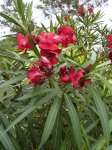Pads
Yamadori
I guess it all depends on the original source of the seeds, all Ficus must produce viable seeds somewhere. Yeah I get that they are not going to without the exact pollinating wasp but surely a good importer can source them.
As I said earlier I found a post elsewhere from someone who seemingly purchased and germinated some from the link I gave so I'm happy to at least give it a shot.
I checked the link you provided. Despite my extensive research I was not aware of this website or that they go by the name of "Wonderboom Fig". I guess mystery is finally solved.
Good luck with the seeds. All European members in the forum would be glad to check the progress of these so please keep us updated!




